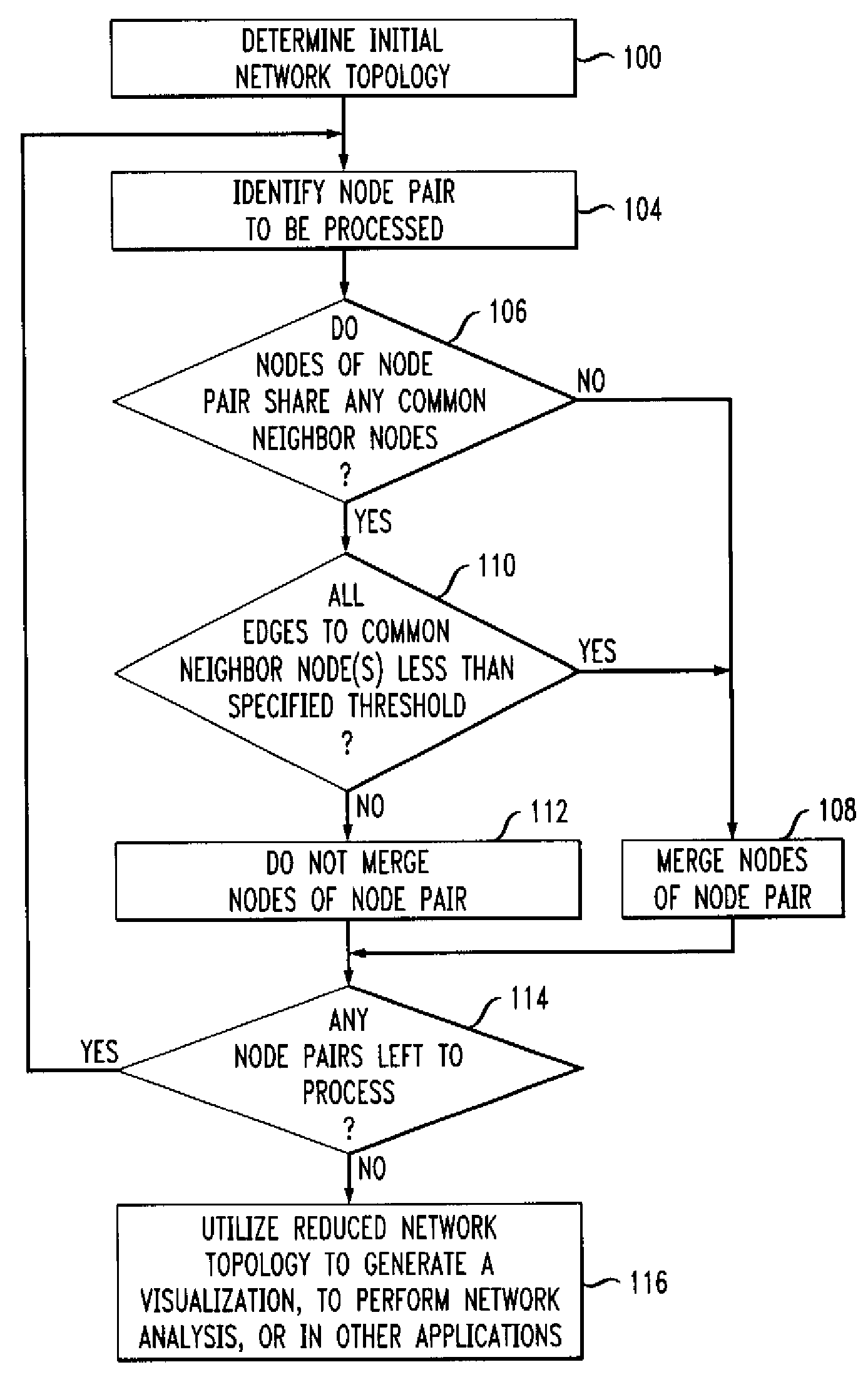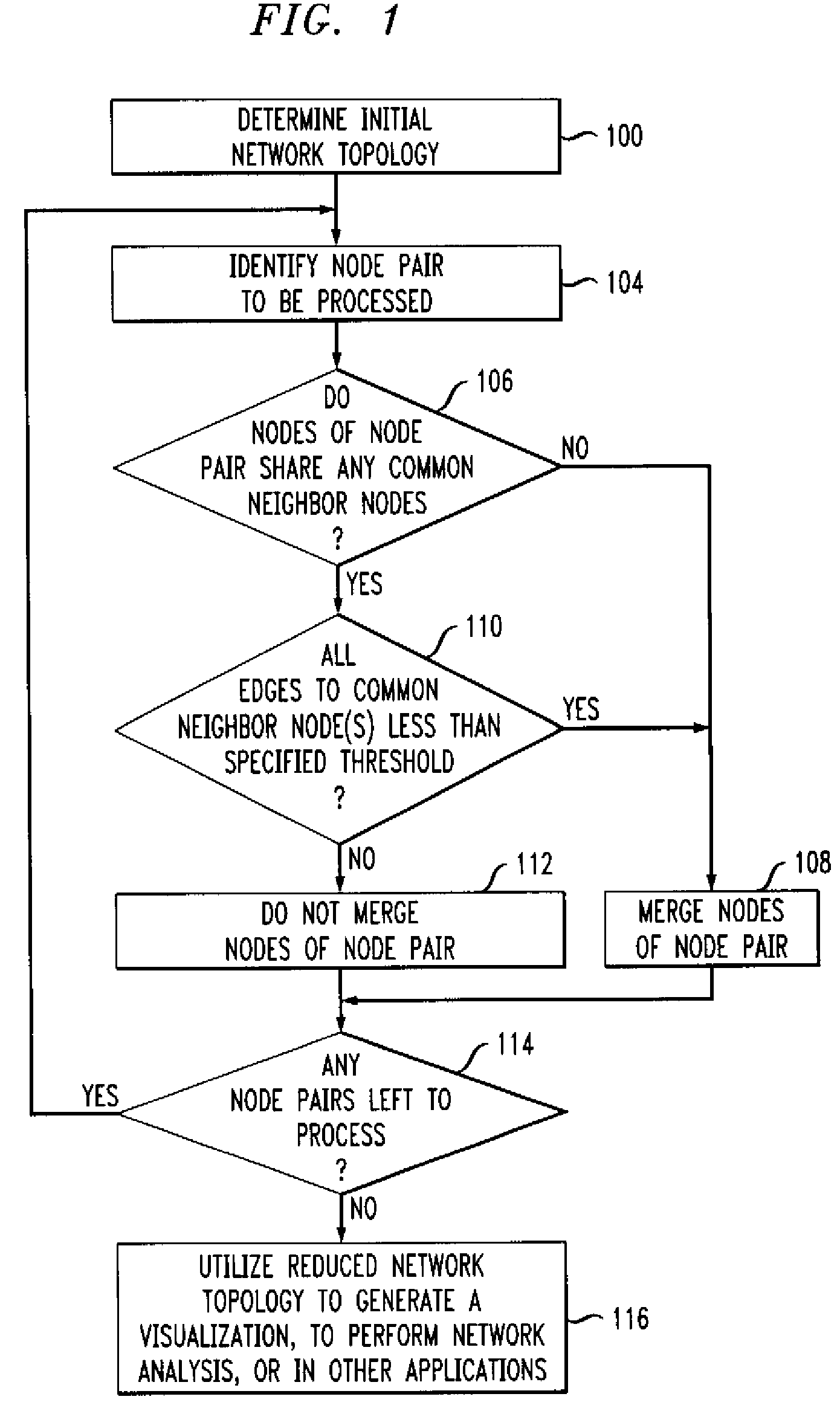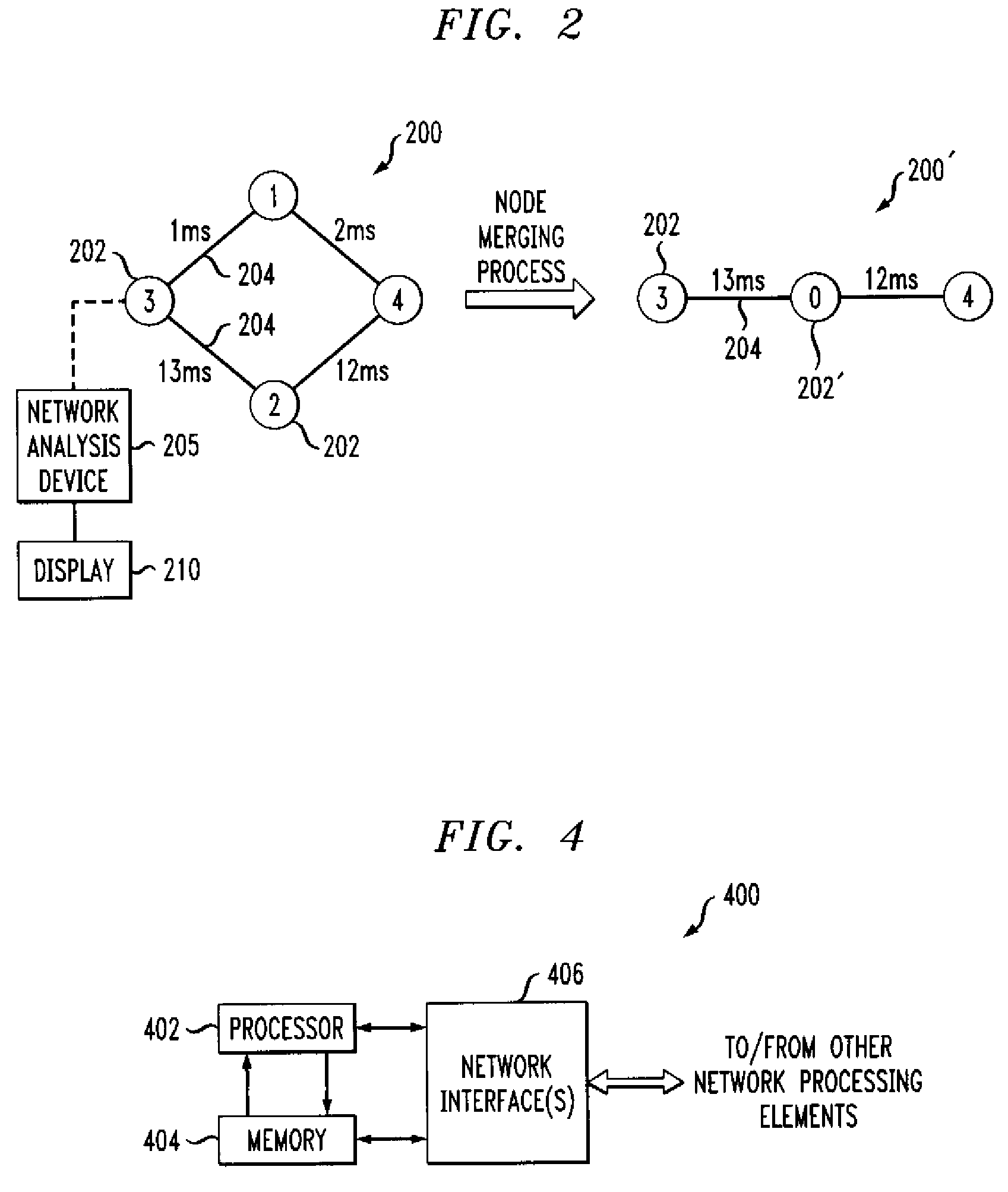Node merging process for network topology representation
a network topology and node technology, applied in the field of communication networks, can solve the problems of difficult to recognize important features of the network topology, limit the number of nodes and edges that can be effectively presented, and large network topologies that are difficult to visualize and interpret, so as to achieve accurate simplified networks
- Summary
- Abstract
- Description
- Claims
- Application Information
AI Technical Summary
Benefits of technology
Problems solved by technology
Method used
Image
Examples
Embodiment Construction
[0018]The invention will be illustrated below in conjunction with various arrangements associated with an exemplary node merging process for generating simplified representations of network topology. It should be understood, however, that the invention is not limited to use with any of these particular illustrative arrangements. For example, although the disclosed techniques are particularly well-suited for use in generating simplified visualizations of network topology, those skilled in the art will recognize that these techniques may be adapted for use in any type of application that can benefit from a reduced network topology.
[0019]The term “network topology” as used herein is intended to be construed broadly, so as to encompass any type of representation comprising nodes and edges. A given network topology may thus represent the topology associated with a particular network layer, such as Layer 3, but may alternatively include other layers or combinations of layers, as well as v...
PUM
 Login to View More
Login to View More Abstract
Description
Claims
Application Information
 Login to View More
Login to View More - R&D
- Intellectual Property
- Life Sciences
- Materials
- Tech Scout
- Unparalleled Data Quality
- Higher Quality Content
- 60% Fewer Hallucinations
Browse by: Latest US Patents, China's latest patents, Technical Efficacy Thesaurus, Application Domain, Technology Topic, Popular Technical Reports.
© 2025 PatSnap. All rights reserved.Legal|Privacy policy|Modern Slavery Act Transparency Statement|Sitemap|About US| Contact US: help@patsnap.com



